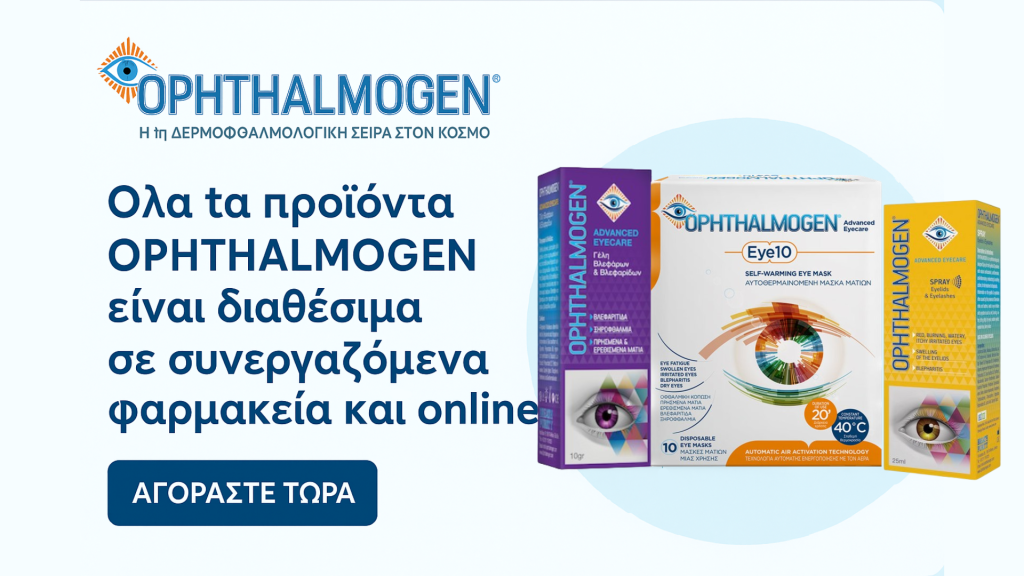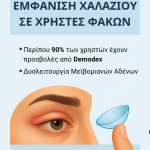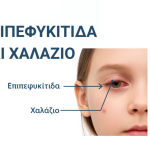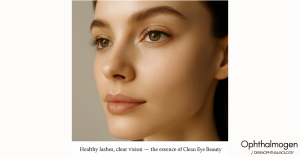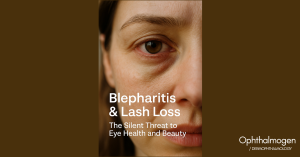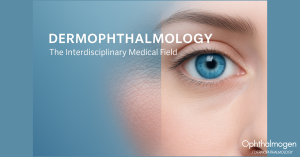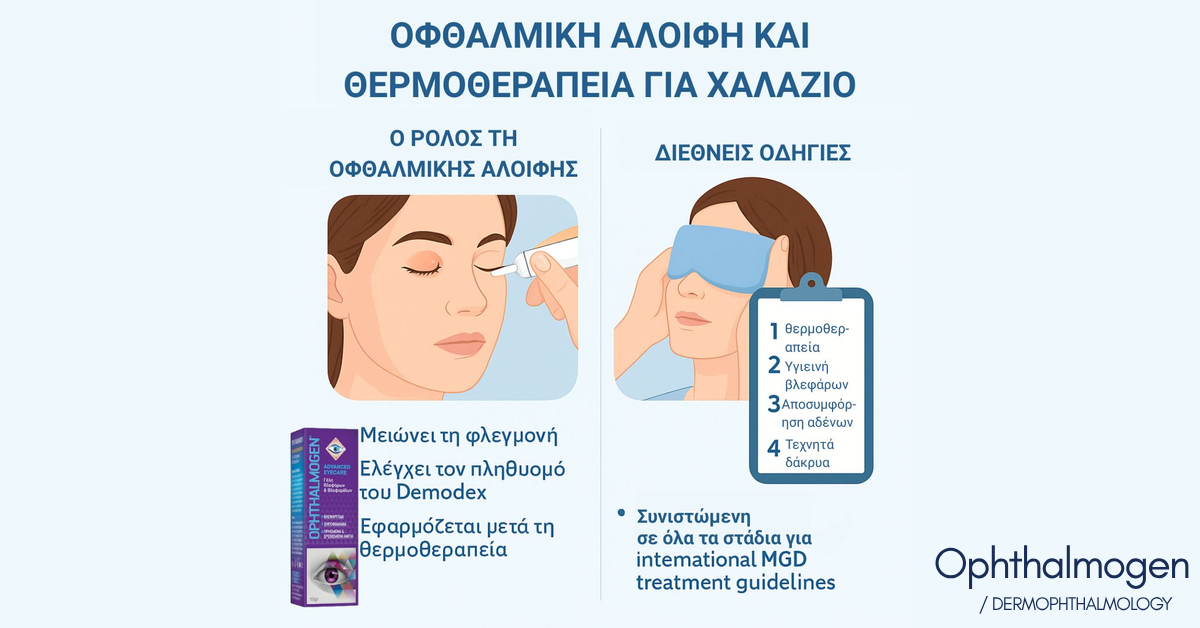
What is a Chalazion?
A chalazion is a nodule on the eyelid caused by blockage and inflammation of the Meibomian Glands (Meibomian Gland Dysfunction – MGD). These glands produce the lipid layer of the tear film. When blocked, their secretions accumulate, leading to inflammation.
The Role of Ophthalmic Ointment
In clinical practice, many ophthalmologists recommend antibiotic/corticosteroid ointments such as Tobradex or Dexamytrex ointment.
These ointments are prescription medicines that can reduce inflammation and discomfort, or prevent secondary infection.
However, chalazion is not an infection, and therefore these ointments do not address the root cause: Meibomian Gland Dysfunction.
According to international guidelines, such ointments may be used as complementary treatment, alongside conservative care such as warm compresses, eyelid hygiene, and massage.
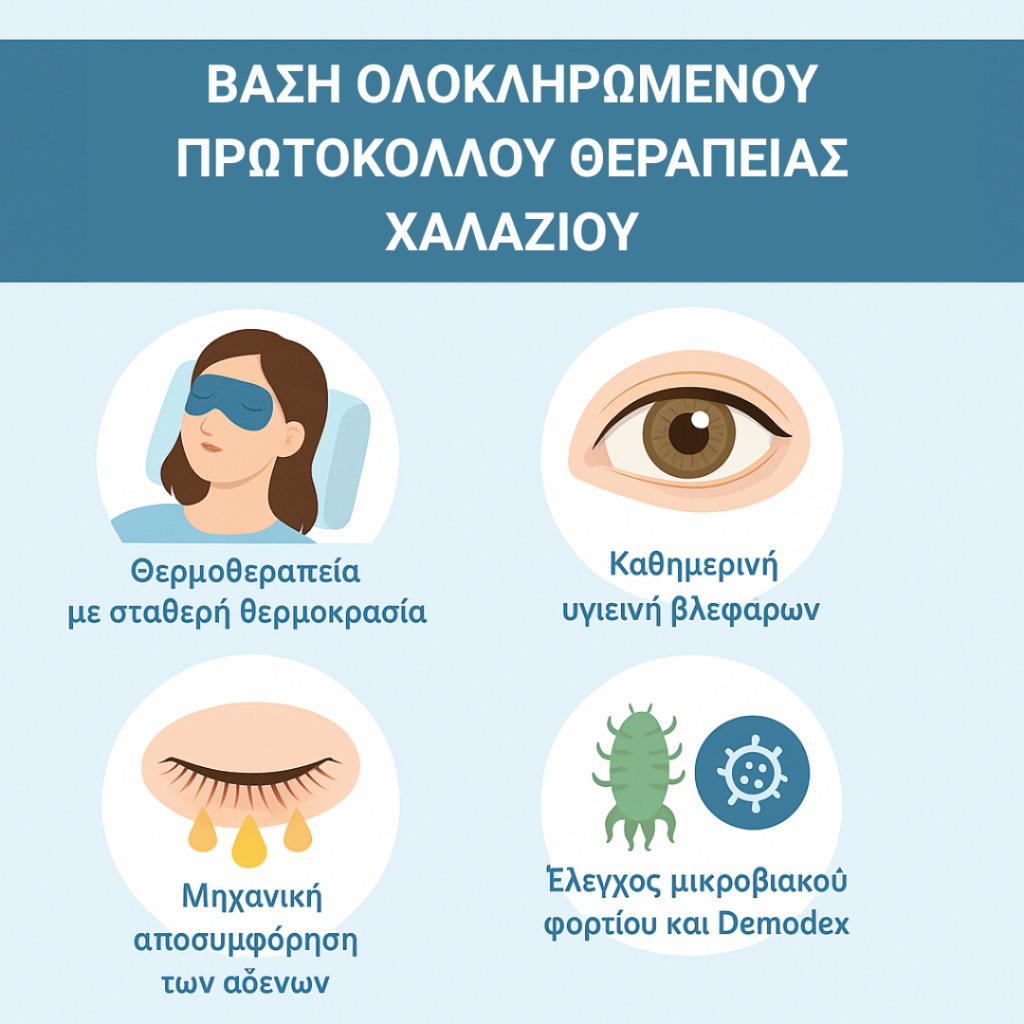
The Basis of the Protocol (International Guidelines)
According to global recommendations (AAO, ESCRS), the conservative management of chalazion includes:
- Warm compress therapy at stable temperature (~40°C)
- Daily eyelid hygiene
- Mechanical gland expression
- Control of microbial load and Demodex
The following protocol with Ophthalmogen EYE10, Naviblef, and Ophthalmogen Gel follows these principles.
1. Warm Compress with EYE10 – 20 minutes
The self-heating compress Ophthalmogen EYE10:
- Maintains ~40°C for 20 minutes
- Softens thickened meibomian secretions
- Facilitates drainage
- Reduces inflammation and discomfort
Use: 1–2 times/day in active chalazion & 1–2 times/week for prevention.
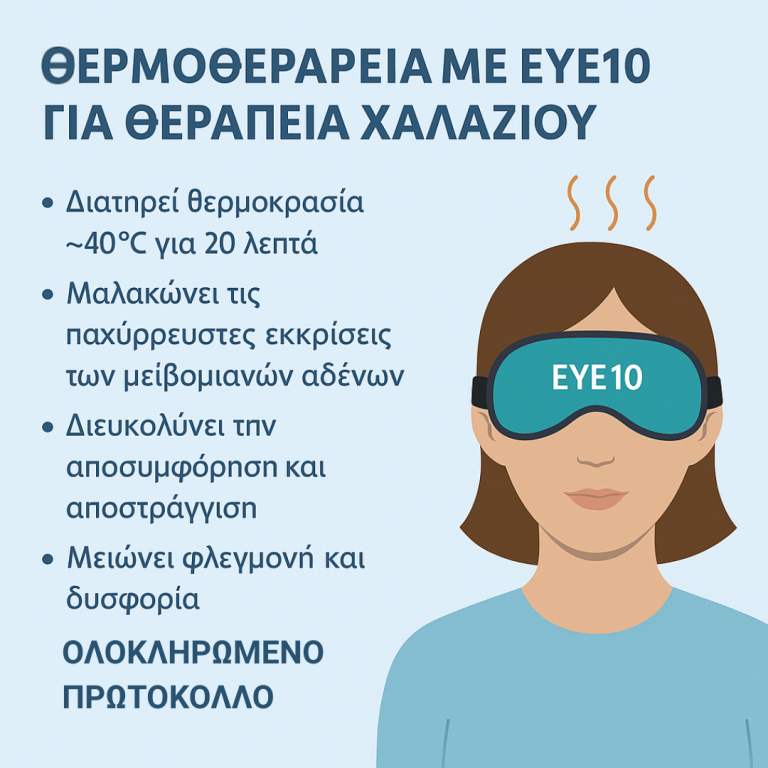
2. Eyelid Cleansing with Naviblef
After compress therapy, cleansing is essential:
- Removes secretions, bacteria, and Demodex
- Reduces microbial load
- Minimizes the risk of recurrence
Use: 1-2 times/day in active chalazion & 2-3 times per week for maintenance
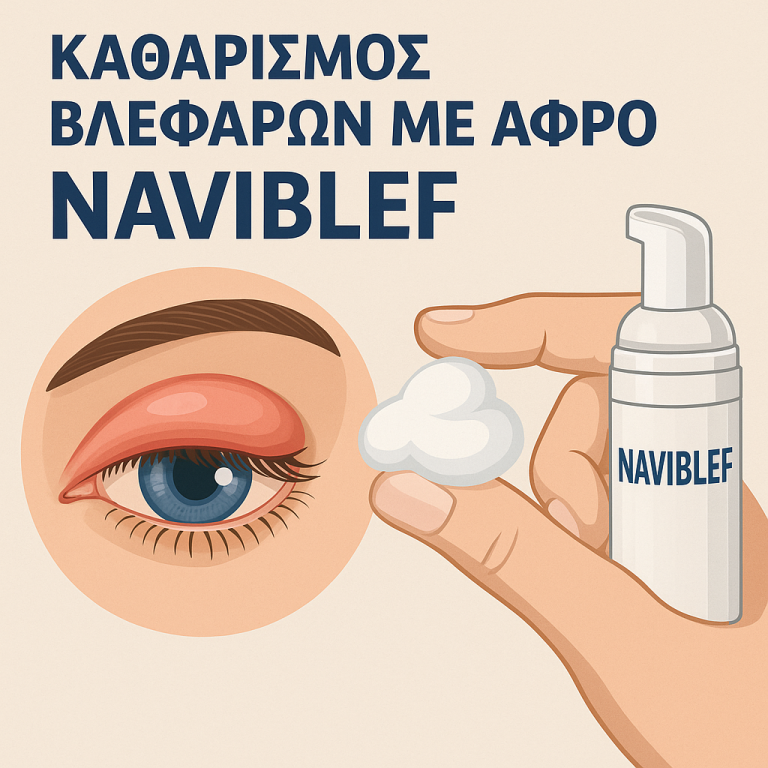
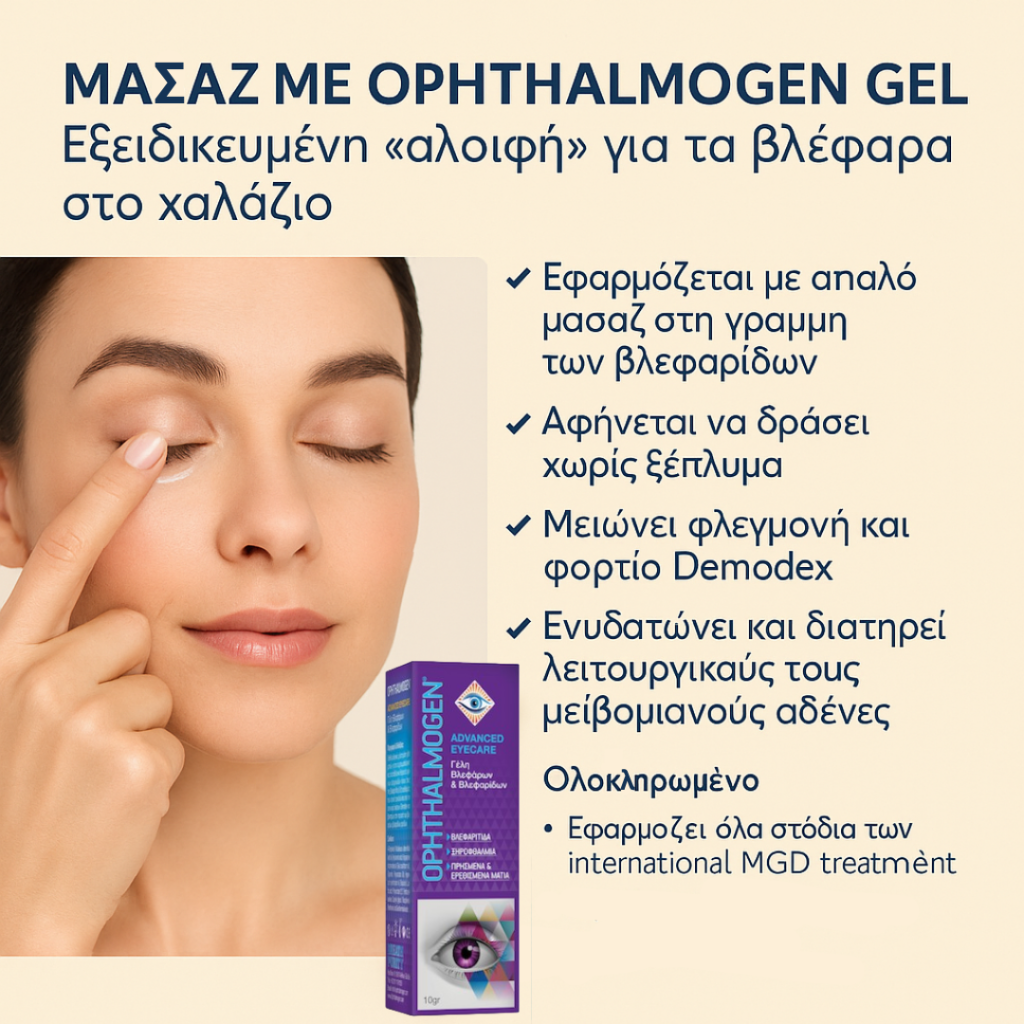
3. Eyelid Massage with Ophthalmogen Gel
Ophthalmogen Gel acts as a specialized daily ointment for eyelid care:
- Applied with gentle massage along the lash line
- Left on without rinsing
- Reduces inflammation and Demodex in a natural way
- Hydrates and maintains Meibomian gland function
Use: 1-2 times/day in active chalazion & 2-3 times per week for maintenance in order to prevent recurrence
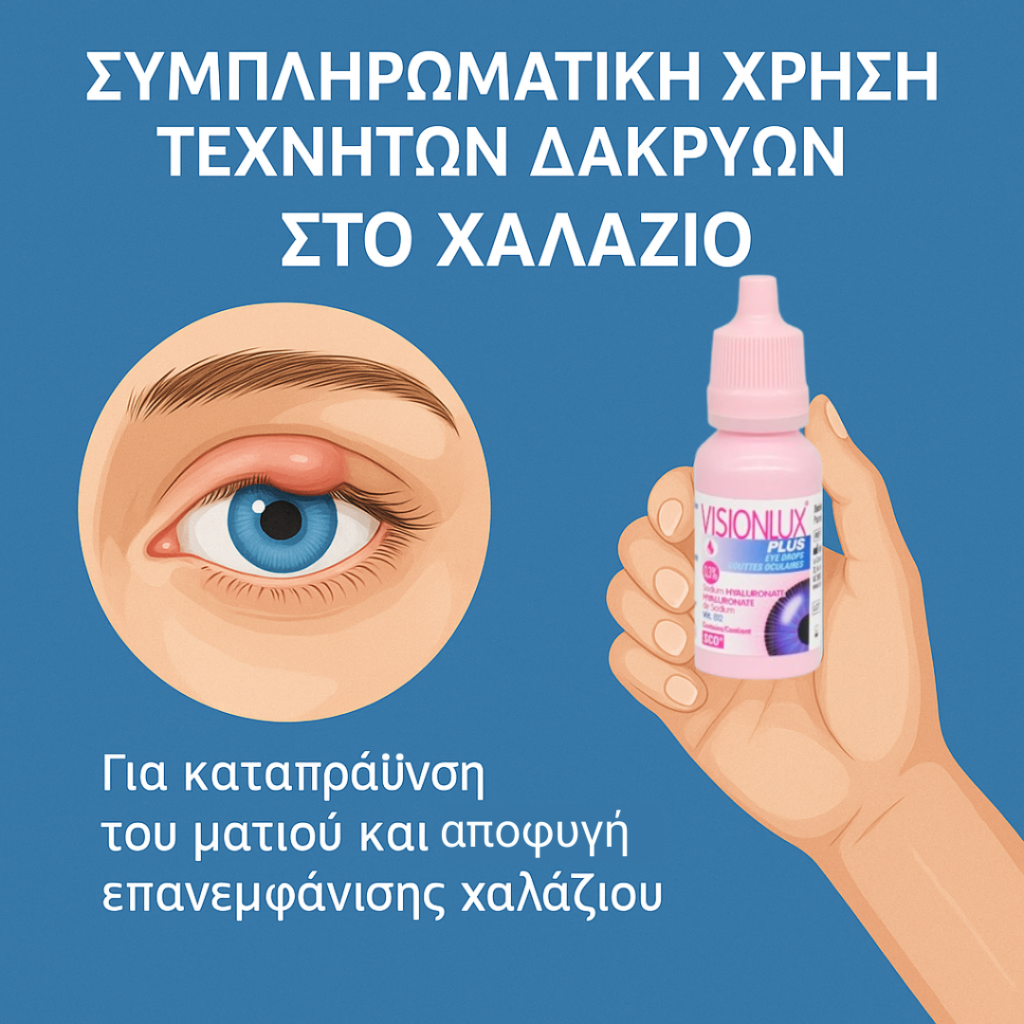
4. Complementary Use of Artificial Tears
Artificial tears play an important role in relieving symptoms and supporting chalazion treatment, especially when dry eye or ocular surface irritation is present.
- Visionlux Plus (with hyaluronic acid, B12 vitamin) provides hydration and antioxidant protection.
- Thealoz Duo and Systane help restore hydration and stabilize the tear film.
- • Refresh Tears and Tears Naturalle remain well-known and widely used options.
Using them 3–4 times per day, depending on symptom severity, helps reduce discomfort and enhances the overall treatment protocol.
5. Prescription Ophthalmic Ointments
In many cases, ophthalmologists prescribe antibiotic/corticosteroid ointments such as Tobradex or Dexamytrex ointment.
- These ointments help reduce inflammation and relieve discomfort.
- They may also be used to prevent potential secondary infections.
- However, since a chalazion is not an infection, these ointmentsdo not treat the root cause (Meibomian Gland Dysfunction).
- For this reason, they are considered complementary treatments and should always be used only under medical prescription.
Their combination with warm compress therapy, eyelid hygiene, and Ophthalmogen products offers a more comprehensive management approach.
Complete Protocol (According to International Guidelines)
- Ophthalmogen EYE10 – 20 minutes warm compress at 40°C
- Naviblef – Eyelid cleansing
- Ophthalmogen Gel – Massage & prolonged action
- Artificial tears – Visionlux Plus, Thealoz, Systane, Refresh, Tears Naturalle for hydration & relief
- Pharmaceutical ointments – Tobradex, Dexamytrex (prescription only, complementary use)
- Prevention – Repeat 2–3 times/week even without symptoms
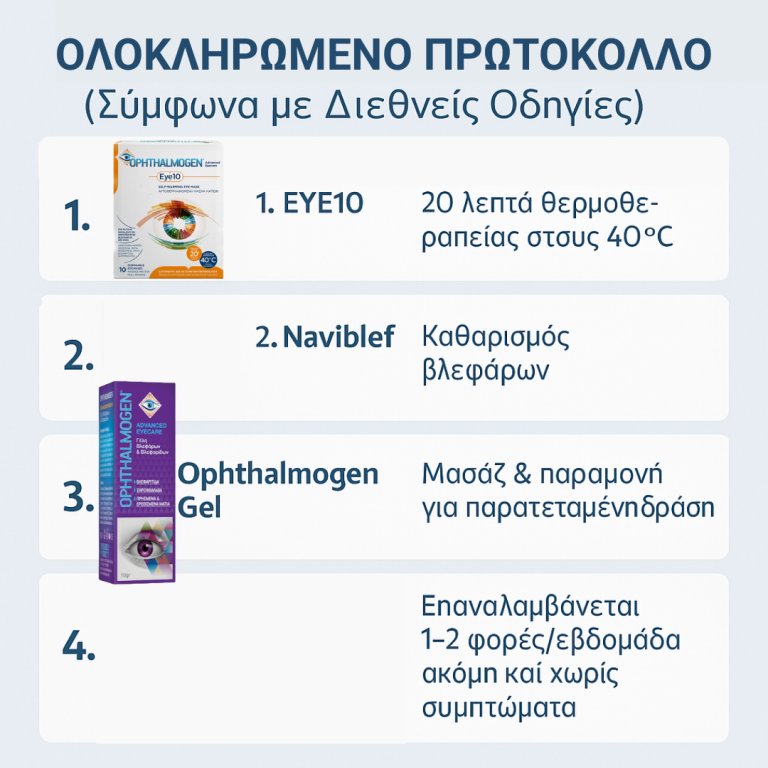
Other Treatments Commonly Used
- Pharmaceutical ointments (Tobradex, Dexamytrex): prescribed by ophthalmologists, helpful but complementary.
- IPL / IRPL therapies: modern light-based treatments that improve meibomian gland function, especially in chronic cases.
- Oral doxycycline: for resistant or recurrent chalazia, due to its anti-inflammatory and lipid-regulating effects (prescription only).
- Surgical excision: for large or chronic chalazia not resolving with conservative care.
Why the Dermophthalmology Protocol Works
- Aligned with international MGD treatment guidelines
- Addresses the root cause: Meibomian Gland obstruction
- Συνδυάζει θερμοθεραπεία, καθαρισμό και μασάζ
- Provides both therapeutic and preventive benefits
- Improves eyelid health and reduces recurrences
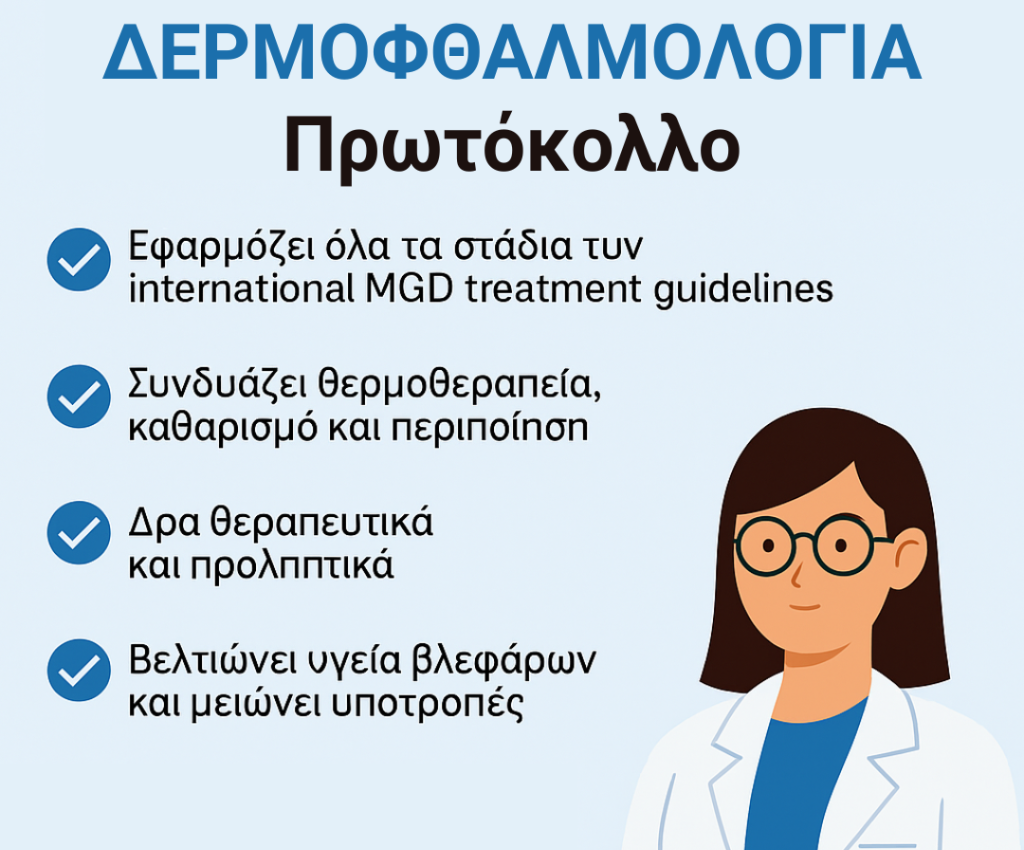
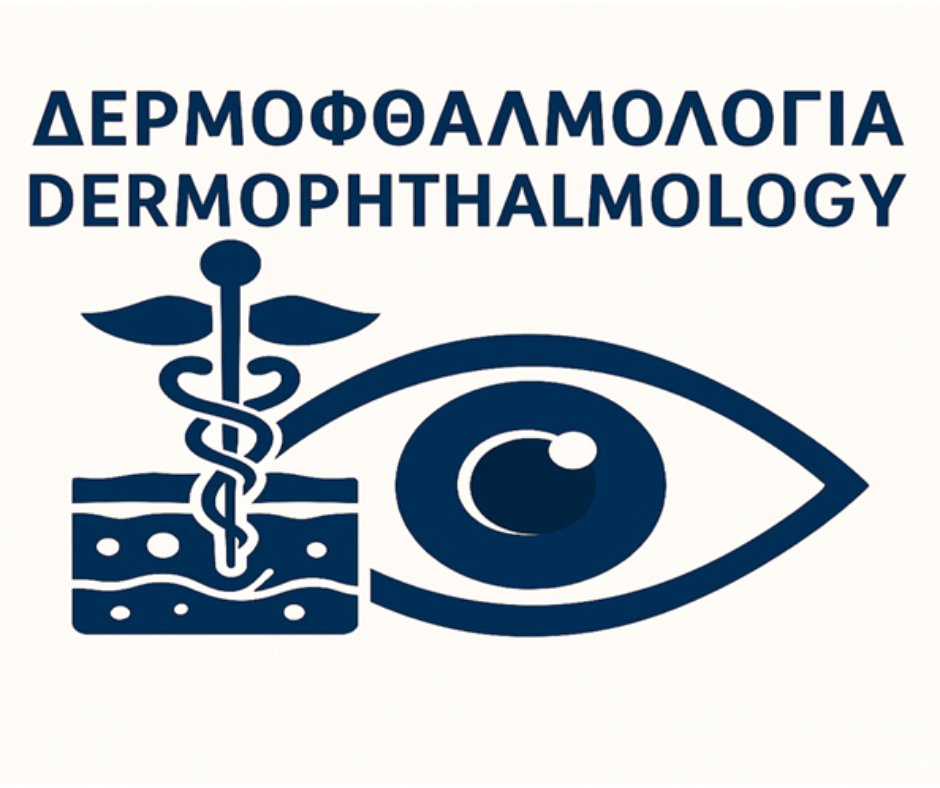
All Ophthalmogen products are available in partner pharmacies
and online:pharmacydiscount.en – Ophthalmogen products
Learn more about chalazion Chalazion – Causes, Symptoms, and Treatment

